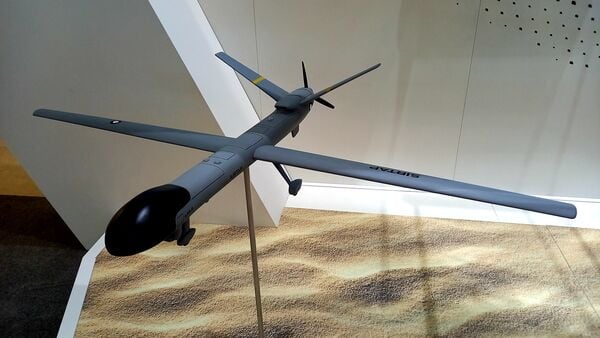
A model of the SIRTAP unmanned aircraft that recently completed its CDR ahead of production. (Janes/Gareth Jennings)
The Airbus SIRTAP unmanned aircraft system (UAS) recently passed its critical design review (CDR), freezing the final system architecture and design ahead of production.
The manufacturer announced the milestone on 27 June, saying the CDR had assessed alignment between manufacturing capabilities and design principles, and that the maturity of the different systems had been assured ahead of final system certification by the end of 2026.
The CDR was signed off by the Spanish Ministry of Defence (MoD), which in November 2023 contracted nine systems comprising a total of 27 air vehicles and nine ground control stations for the Spanish Army and the Air and Space Force. With two simulators, the deal was valued at approximately EUR495 million (USD543 million at the time).
Originally named Atlante II, the SIRTAP moniker is a Spanish acronym that loosely translates as ‘Integrated System for High-Performance Unmanned Air System'. With Airbus having originally launched SIRTAP with Colombia, the contract with Spain formally kick-started development of the UAS that is being billed as sitting midway between the light tactical and medium-altitude long-endurance (MALE) classes.
With a maximum take-off weight of 700 kg and a 150 kg payload capability, the SIRTAP is intended to be equipped with both a multimission radar (enabling over land and maritime roles) and an electro-optic/infrared (EO/IR) sensor turret. Company specifications give the unmanned aircraft a range of more than 2,000 km and an endurance of over 20 hours.
SIRTAP uses an Airbus common ground control station and would be capable of both line-of-sight and beyond-line-of-sight operations. The system will also be certified to fly in segregated airspace.
Looking to read the full article?
Gain unlimited access to Janes news and more...







